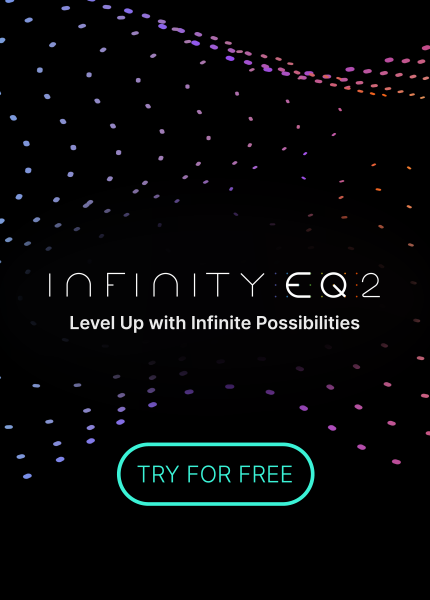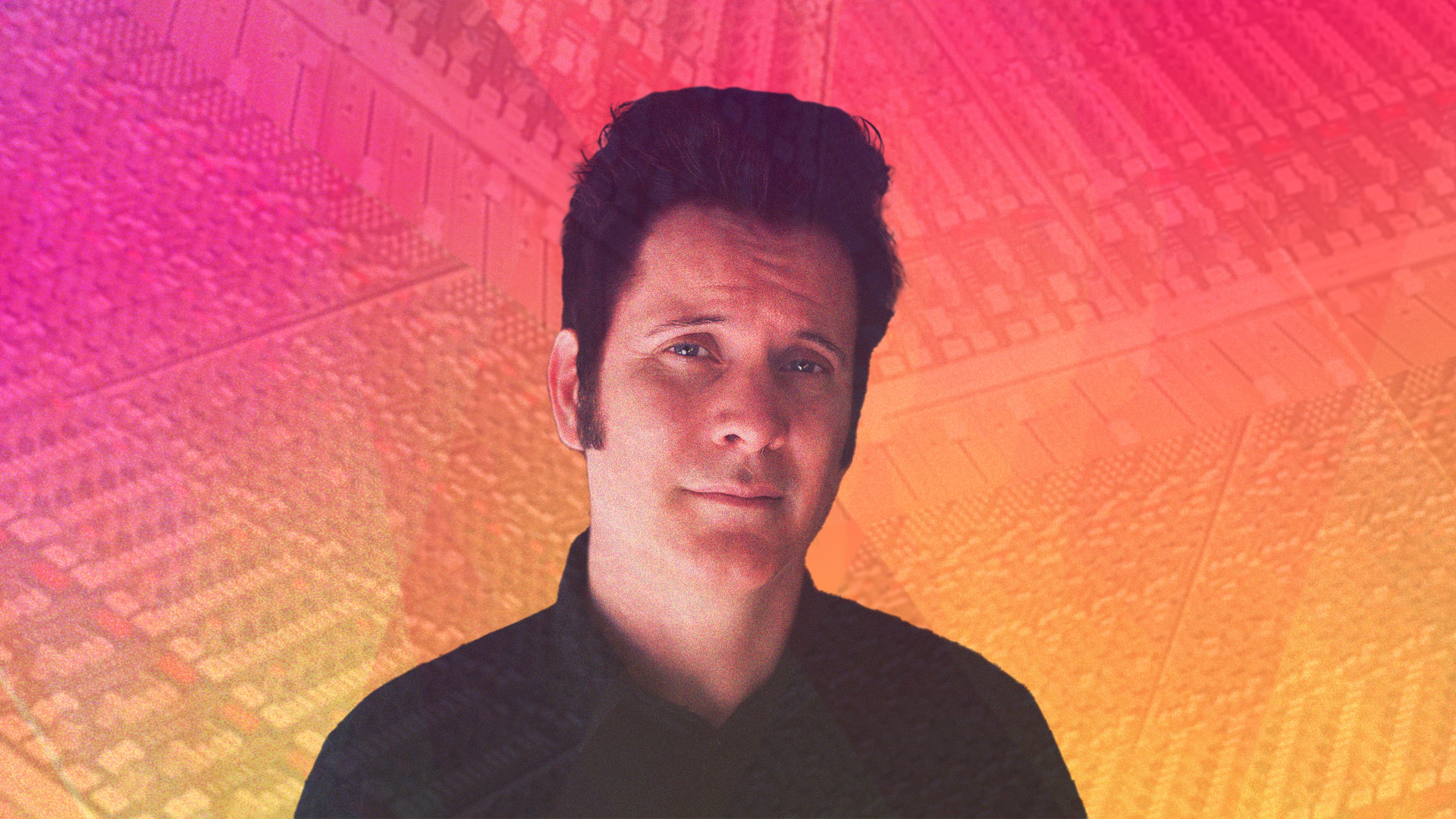If you’re known to browse YouTube looking for music production guidance, you’ve undoubtedly come across the Produce Like A Pro channel. Its patriarch, Warren Huart, is a Brit-turned-Angeleno who’s spent almost as much time in the studio as he has on Earth.
Recently, Warren was kind enough to take some time to chat with us about the Grammys, the importance of messing up, and his thoughts on the sudden surge in self-produced music.
Drew Van Buskirk: For those who don’t know: who is Warren Huart?
Warren Huart: I was brought up in England in a village called Crookham Village in Hampshire. The nearest major town was called Fleet that had an amazing music store called Kingfisher Music. There was also a store called Anderton’s Music just a few more miles away in Guildford. Even though [I lived in] a little village next to a little town, we were surrounded by amazing music. I like to say that I think I fell in love with music too young. I already had a big record collection before the age of 13. While most of my friends first discovered music around that age, I already had maybe 150 albums.
The great thing about where I grew up was there were a lot of bands and a lot of music. It wasn’t like I lived next door to a massively successful artist or anything like that, but all my friends were obsessed with music, and many of them still work in music. One of my oldest friends who I went to Sunday school with is Patrick Hannan, drummer of the Sundays; another great friend of mine, Matt Butcher, is one of the best live sound guys in the world. Even Spike Stent, one of the biggest mixers in the world, went to my school. It seems like everyone from my area in my age group went into music.
DV: Was that sort of organic, ‘everybody knows everybody’ ethos what led to your time in Star 69?
WH: My friend Patch (Hannan from The Sundays) had auditioned for a band that singer Julie Daniels was putting together. Patch was playing drums for the band, and he asked me if I play bass. I said “Well, I play guitar.” He said, “Cool, we need a bass player.” So I went to the audition, got the gig, and we had a couple of singles in the UK. We played the Reading Rock Festival and loads of other great shows and had a blast.
DV: What was it like relocating to the US after your initial success abroad?
WH: The thing was, even though we were doing well, we were naturally a bit more American than the usual Britpop acts we played with. We had an American singer, and she had a very American voice, and while we weren’t grunge, we were definitely more like Madder Rose than Blur. So, America made sense for our band.
When we first got here, we hadn’t secured an American deal, but a British publisher called Jeremy Lascelles paid for us to make a record with Don Smith who was, God rest his soul, an absolutely amazing engineer. His engineering work is what he was most famous for: he engineered all the Keith Richards solo records, all the big Tom Petty of the 80s, plus the Traveling Wilburys albums as well. We loved him, working with him was a wonderful experience.
DV: When you first started making music, which came first: the writing and playing, or the production?
WH: Writing and playing, but I was also always the guy that did the demos for the band. I grew up wanting to be Brian May, and playing guitar is what got me into music. Back when I was getting started, things didn’t work the way they do now. It used to be that most producers didn’t have the same musical ability that artists did, and in turn the artists didn’t have the gear they needed to record their songs. So, I had to find a way to produce and record my own demos because I couldn’t afford to go into a good studio.
When I was a kid in the 80’s and 90’s, to get a decent quality recording back then, you would likely need to go into a local recording studio, which cost anywhere from £300-£400 a day, even if you went into London. Back in ‘89, none of my friends had that kind of money, so we had to figure it out for ourselves. That same do-it-yourself spirit is what exists in a lot of today’s music, and I think it’s really inspiring.
DV: Do you remember the first board that you worked on?
WH: Our studio in England had a Soundtracs console, which was really fantastic. If you want to get a classic British console from that era [Soundcraft, Allen & Heath, Soundtracs, etc.], you could probably buy a 16- or 24-channel console for about $2,000; you’re not going to find a cheaper way of getting a bunch of good preamps.
We also had a Tascam MSR-24, which featured 24 tracks recorded to one-inch tape, and I got myself a Soundtracs Topaz console and an Alesis ADAT 8-track recorder when I first moved to Los Angeles. The Alesis ADAT was famously used on multiple platinum records from the 90’s, most notably Alanis Morrissette’s “Jagged Little Pill.”
DV: As your career has evolved over the years, I imagine your workflow has done the same. These days, do you prefer working in or out of the box, or do you go with what best serves the project?
WH: I have no problem working entirely in the box. There are times when I have clients like Ace Frehley for example, who will see my SSL and go “Great, let’s work together.” But there’s plenty of other people that don’t give a rat’s arse. And to be honest, you can mix entirely in the box and make it sound absolutely incredible. It’s great to have the hardware on the way in (if you can) and it’s great to have choice, but it’s not essential to making a great record. There are so many fantastic records that are mixed entirely in the box these days, and that includes very organic-sounding albums. There’s this myth that to get a truly organic sound you need to make your record in a big analog room, and it’s just not true. The wonderful advantage of a live room is the interaction between musicians and access to excellent mics and equipment, but the pandemic has taught us that this isn’t always a necessity.
For example, when I first reviewed the [Slate Digital VMS] ML-1 mic, the C-12 emulation sounded just as good as any C-12 I’ve used; when people asked me about it, I’m like, “If you only buy it for one thing, buy it for that.” The fact that it can accurately emulate all these different mics is amazing. If you pair that mic with a decent interface (and, if you’re going to start getting into hardware, maybe a nice mic preamp and compressor), that’s all you really need. 90% of recording is working with one musician at a time anyway.
DV: When working entirely in the box, do those same essentials apply?
WH: I think the best way to answer that question is to ask yourself how you’re recording. If you do have access to real instruments and a nice mic with some good preamps and compression, then you’re probably just going to be using the stock plugins that come in your DAW. On the other hand, if you’re recording a ton of virtual instruments, you’re probably going to look for analog emulation plugins to help give your sounds more character. That’s where those plugins really shine.
DV: Your website and YouTube channel Produce Like A Pro features an exceptionally executed and eclectic collection of content. Was that always your vision for the channel?
WH: I think I’ve always had very altruistic ideas and principles. As Duke Ellington said, “There’s only two types of music: good and bad.” Growing up in the UK, we were bombarded by all types of music, and the impact that diversity of sound and genre had on our generation is just massive. I think one of the advantages of growing up in a very small nation during that time period was that sudden influx of different sounds and styles forced artists to try to cater to everyone’s tastes and influences all at once, which led to some really incredible results. It cannot be overstated how blessed I feel to have grown up in that era.
In that spirit, we’ve always covered a wide range of topics and genres, and we’ll continue to do so. To me, it’s all about bringing everybody together. That’s why it’s called Produce Like A Pro—I didn’t want it to be about me at all. I don’t want to be a channel that’s built around one person, because I’m no different than you. Yes, I often speak on things I can be authoritative about, but none of it is about me.
DV: You worked on several songs with The Fray that became television mainstays throughout the mid-00’s. What is your involvement in the process of moving tracks you’ve worked on from album to TV?
WH: One of the biggest things I learned actually came from the years I spent producing tracks for X Factor and artists like Kris Allen who won American Idol. They’d always hire me to do the more organic stuff with lots of pianos and guitars and acoustic instruments. On those tracks, low mids are your enemy—they do not translate on television very well. A lot of the time that would involve me scooping out around the 350 hz range, but these days things are changing rapidly because so many of these streaming giants are requiring everything be mixed for Atmos.
Whether people want to accept that immersive sound is important or not isn’t really relevant anymore, because it’s here to stay. We are already immersive, kids are already growing up with it. I would say that being aware of current technology standards and everything that’s going on in your industry is key. If you’re young and just getting started, try to get ahead of the curve as much as you can.
For instance, a few years ago there was a letter circulating throughout the industry that complained that well-known producers were having to invest in higher-quality interfaces that ran at 192. I was asked my opinion on this, and I pointed out that kids are buying interfaces that can handle that sample rate, and that even though it was an extra expense for established producers, it was silly that someone who was just getting started could produce at a higher sample rate than the pros. It’s an ever-changing industry—we’ve gone from wax cylinder to tape all the way to almost unlimited tracks. The most important thing is creativity. As Quincy Jones says, “It’s the song, the song, and the song.”
DV: Is there a really common pitfall that you’ve seen fellow producers make that you think can be avoided, or do you think those hurdles are essential for people to figure out for themselves?
WH: You definitely have to figure them out. My main advice for up and coming producers is to just cut yourself some slack, give yourself a break. Learn your tools, and don’t be afraid to mess up. The more you mess up, the more you learn. If somebody says you overtuned something, you probably did—but that’s okay, because that means you’re pushing the boundaries and challenging yourself. Learn from it and correct it.
I’m an associate professor at a college in the Netherlands called ArtEZ. Once when I was mentoring some students, we were reviewing some things they’d been working on. One of them had a very raw, beautiful track, and one of them had a very produced kind of tune. I played the raw one first and loved it. Before I played the more produced track, the artist sort of apologized and said, “Oh, mine’s a bit different than the last one.” I don’t mind that. I told them, it’s okay to use your tools excessively as part of your development, because if you’re pushing them really hard, you’ll naturally learn how to use them properly going forward.
DV: Let’s finish things off with some easy ones. What have you been listening to or watching lately that you’ve really loved?
WH: I mean, God bless Questlove. I feel like he did a real service for us with Summer of Soul. It opened up a whole new generation of people to the likes of Stevie Wonder, Nina Simone, Sly & the Family Stone, just so many incredible musicians! And I really liked Jon Batiste’s record, of course. I’m so glad he won the Grammy. Silk Sonic & Jacob Collier put out really fantastic records as well.
My father played a lot of classical music and jazz when I was growing up. He bought me “A Night at the Opera” for Christmas when I was 7, so Queen was a natural extension for me. But gun to my head, I feel my most relaxed when I’m driving and listening to incredibly complex music. I love music that challenges me—it actually relaxes me more when I’m listening to something really intense. If I could make one album, it would be “Songs in the Key of Life.” It doesn’t get any better than that. Everything is funky—the songs are incredible, the musicianship is insane. And of course, you’ve got “Isn’t She Lovely”, just so many masterpieces on that record.
DV: Are you working on anything currently that you’re particularly jazzed about?
WH: Yeah, I’m very excited. In fact, they just texted me. I’m going to be mixing this piece. His name is Michael Humphries. And his sister is Sage Humphries, who is a ballerina at the Boston Ballet. Michael is a young composer, jazz musician. And he composes music for the Boston Ballet and has done pieces for them. He just called me the other day and asked me to mix a piece that he wrote, which is absolutely beautiful.
I love seeing and working with people in their early 20s that are killing it and working on that kind of level. They’re getting into the idea of being a really great musician; they like to get together and play grooves and write great songs, and that’s so exciting! While that particular song was done live in a room with everyone playing together, they’re also making great recordings themselves in their bedrooms, and that’s also a really beautiful thing. This is a pretty amazing time to be doing music.
I love that we as human beings love those stories where somebody kind of just breaks the mold, because it gives us hope. Jon Batiste is a perfect example: the fact that he’s probably one of the greatest piano players alive and then one day he decided, ‘Oh, by the way, I’m gonna try singing,’ and everyone loved it! If you’re 15 years old and you hear that, it gives you hope that you can do it too.
DV: I think that just about covers all our bases. Thanks so much for the chat Warren.
WH: I’m off for a late lunch! Thanks Drew, you rock.





